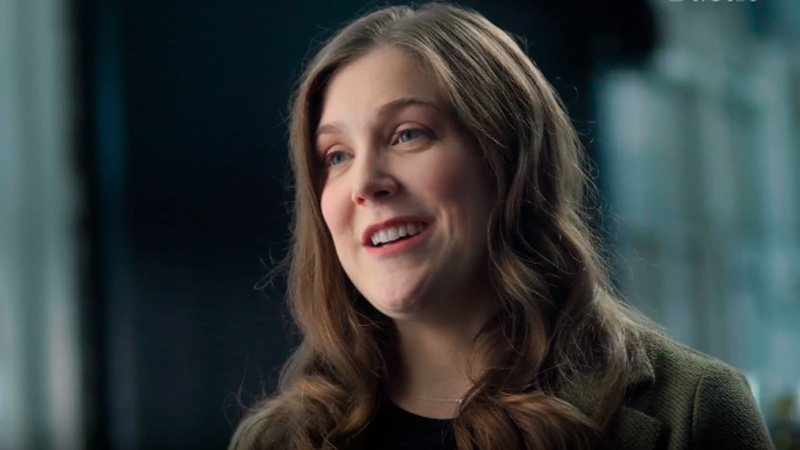JPMorgan Chase is seeking to both support the development of carbon dioxide removal (CDR) technologies and strengthen the voluntary carbon market. Tell us about your role at JPMorgan Chase and your work on both initiatives?
In my role, I’m focused on implementing strategies to reduce the environmental impact of our day-to-day operations, including from our corporate offices, retail branches, and data centers. We have set a number of targets to help drive down our greenhouse gas (GHG) footprint, including a goal to reduce our Scope 1 and 2 GHG emissions by 40 percent by 2030 over a 2017 baseline.
While we continue to prioritize efforts to reduce our operational emissions on an ongoing basis, we also purchase voluntary carbon credits to address unabated Scope 1, Scope 2 or Scope 3 business travel emissions annually. We believe it is in the interest of all companies to pursue efforts to avoid, reduce and/or neutralize emissions in their own operations and across their value chains—in that order—and that carbon credits should not be used to unreasonably forestall or supplant these efforts. However, carbon credits can play an important role in both complementing such efforts and accelerating the overall transition to a low-carbon economy.
As a large financial institution, we set high standards and conduct extensive due diligence, contributing to both the overall demand for and the advancement of best practices for evaluating high-quality credits. In addition to purchasing credits as part of our efforts to address our own operational emissions, the firm also provides strategic advice to support clients’ transition efforts, enhances liquidity through credit trading, connects buyers and sellers, and deploys capital to promote decarbonization solutions.
There are many ways in which the financial industry can play a role in helping to scale solutions to address the climate crisis and drive economic growth. In what way does your work at JPMorgan Chase make an impact in communities in which they operate or serve?
At JPMorgan Chase, we strive to help companies that are building innovative climate solutions grow and scale faster. As one of the world’s largest financial institutions, JPMorgan Chase participates in the voluntary carbon market in a variety of ways—both as part of our own carbon management strategy, and in support of our clients’ efforts to transition to a low-carbon economy.
In May 2023, to help speed and scale the growth and development of CDR technologies, JPMorgan Chase announced that it signed long-term agreements to purchase over $200 million in high-quality, durable CDR. These agreements are intended to remove and store 800,000 metric tons of carbon dioxide equivalent (mtCO₂e).
As part of these agreements, we’re working with a variety of companies that are developing innovative technologies to remove carbon dioxide from the atmosphere. I had the pleasure of visiting one of the companies we work with, Charm Industrial, earlier this year. I was impressed with their vision for making an impact on the climate, while also having a positive impact in the communities where they operate. It’s this kind of innovation that can help the world achieve its climate goals, while continuing to support the economy by bringing job opportunities to agricultural and rural communities.
Looking ahead, what do you see as the greatest challenges in the carbon management space?
Over the past two decades, tremendous efforts have been made to establish and grow an effective voluntary carbon market, and it has enabled considerable investment in climate solutions. However, as decarbonization accelerates across the global economy, we anticipate that demand for carbon credits will continue to increase, as will the need to further grow and strengthen the market to meet that demand.
For this to happen, several significant and interrelated challenges need to be addressed, including quality supply, market integrity, market complexity/fragmentation and market maturity. JPMorgan Chase is uniquely positioned to help address these challenges, not only through purchasing high-quality carbon credits to address our own emissions, but by helping drive the financing of high-integrity carbon projects at scale.
What makes you hopeful for the future?
It has been incredibly inspiring to see the passion for and growth of the carbon removals space to help organizations achieve their own climate goals. I have had the privilege to meet and learn from many people and companies working in this space.
Not only are there many more of them now than there were a few years ago, but every sector of the economy is beginning to express interest in this space as well. This enthusiasm, passion, expertise and willingness to collaborate to solve a really complex problem is a promising sign for advancing a more sustainable future.
Learn more about how JPMorgan Chase is working to help grow and scale this industry here.
For informational/educational purposes only: Views and strategies described may not be appropriate for everyone and are not intended as specific advice/recommendation for any individual. Information has been obtained from sources, including those publicly available, believed to be reliable, but no representation or warranty is made by JPMorgan Chase as to the quality, completeness, accuracy, fitness for a particular purpose or non-infringement of such information. You should carefully consider your needs and objectives before making any decisions and consult the appropriate professional(s). Outlooks and past performance are not guarantees of future results.




